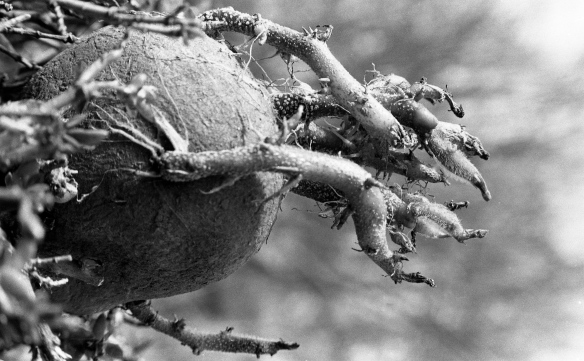Feeling better again today, but still pretty drowsy, I scanned a batch of 22 unsorted random black and white negatives, and tested my memory in an attempt to date and locate them. I think the images were all produced in 1983.
It was probably Jessica who made this picture of Louisa and me in our house in Gracedale Road. The ginger jar on the shelf above my shoulder was one of the spoils from our mudlarking. The large gilt-framed painting above Louisa’s head is ‘Have You Heard’, by Mary Evelina Kindon, which was exhibited at the Royal Academy in 1905. Sadly, I no longer had room to hang it when I returned to London, so Michael arranged for its sale at a Bonhams auction in 2009.
The large gilt-framed painting above Louisa’s head is ‘Have You Heard’, by Mary Evelina Kindon, which was exhibited at the Royal Academy in 1905. Sadly, I no longer had room to hang it when I returned to London, so Michael arranged for its sale at a Bonhams auction in 2009.
It was only this morning that Becky was amusing us with a description of how she would work on the pc at Commonside Trust, whilst simultaneously cradling a teenage client’s infant. The next two shots, as she plays cards whilst nursing Louisa, demonstrate how she perfected the skill.
Having peered through a magnifying glass all that time ago, Matthew was to give Jackie and me one each for Christmas a couple of years ago.
Sam is engaged in one of his favourite pastimes.
These landscapes were probably taken in Surrey on a visit to Polesden Lacey.
Polesden Lacey is an Edwardian house and estate. Located on the North Downs at Great Bookham, near Dorking, Surrey, it is owned and managed by the National Trust and is one of the Trust’s most popular properties. This photograph suggests to me that it was here that Sam lost his soldier. Jessica, Michael, Sam, Louisa, and I travelled quite regularly down the A3 from Gracedale Road to this garden.
Michael, inspired by these visits soon became a life member of the National Trust.
Here are two of Louisa concentrating on her food in Gracedale Road.
Jessica, Louisa, and Sam enjoy a game of ball at the home of Aunt Elspeth in Rugby.
Jessica’s late. loved, cousin Anthony tends his mother’s garden in the background.
The daffodils suggest this must have been around Louisa’s first birthday.
Finally, can anyone identify this grasping plant?
This evening we dined on Jackie’s superb liver casserole, mashed potato and swede, and crisp carrots, broccoli, and green beans. I drank more of the cabernet sauvignon opened four or five days ago. It was still drinkable. Ian and Jackie drank Hoegaarden, and Becky rose.

















